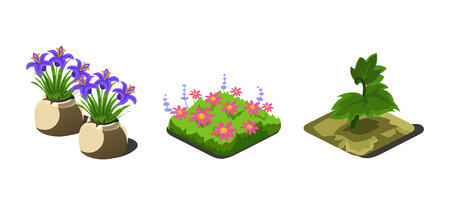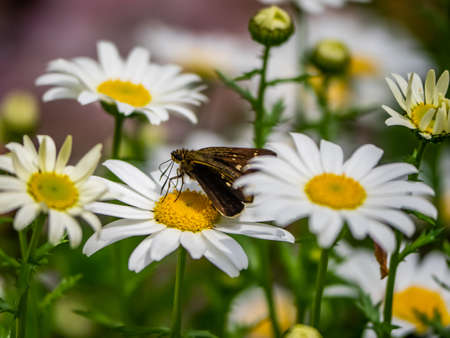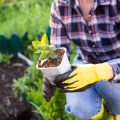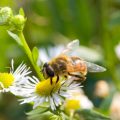1. Understanding Pollinators and Their Role in Your Garden
Pollinators play a crucial role in both natural ecosystems and home gardens. These hardworking creatures help plants reproduce by transferring pollen from one flower to another, which leads to the production of fruits, seeds, and new plants. Without pollinators, our gardens would be less colorful, less productive, and far less diverse.
Why Pollinators Matter
Pollinators like bees, butterflies, hummingbirds, moths, beetles, and even some bats are essential for the reproduction of over 75% of flowering plants. In the U.S., its estimated that one out of every three bites of food we eat exists because of pollination. That includes favorites like apples, almonds, blueberries, and tomatoes.
Key Benefits of Attracting Pollinators
- Increased garden yields: More pollination means more fruits and vegetables.
- Biodiversity support: Pollinators contribute to a healthier ecosystem by helping native plants thrive.
- Beautiful landscapes: A pollinator-friendly garden is often full of color and life.
Common Pollinators in American Gardens
Each type of pollinator brings something unique to your garden. Here’s a quick overview:
| Pollinator | What They Love | Fun Fact |
|---|---|---|
| Bees | Native wildflowers, herbs like lavender and thyme | There are over 4,000 bee species in North America alone! |
| Butterflies | Nectar-rich flowers like milkweed and coneflowers | They prefer flat blooms where they can land easily. |
| Hummingbirds | Tubular red or orange flowers such as salvia and trumpet vine | A hummingbird can visit up to 2,000 flowers a day! |
| Moths & Beetles | Pale or white flowers with strong scents (often open at night) | Moths are active in the evening and night hours. |
The Connection Between Pollinators and Ecosystem Health
A thriving population of pollinators is a good sign that your local environment is healthy. They help control pests naturally, support plant diversity, and serve as food sources for birds and other wildlife. By welcoming them into your garden, youre not just boosting your harvest—you’re making a real impact on ecological sustainability.
Quick Tip:
If you notice fewer bees or butterflies than usual, it might be due to pesticide use or lack of native flowering plants. Small changes—like planting milkweed or avoiding chemical sprays—can make a big difference.
Looking Ahead:
Now that you understand why pollinators are so important, the next step is learning how to design your garden to attract them naturally. Stay tuned for the next section where we’ll explore how to choose the right plants and layout for your pollinator paradise.
2. Choosing the Right Native Plants for Your Region
One of the most important steps in creating a successful pollinator garden is selecting native plants that thrive in your local environment. Native plants are adapted to your regions climate, soil, and pollinators, making them low-maintenance and highly beneficial for bees, butterflies, hummingbirds, and other pollinators.
Why Native Plants Matter
Pollinators have evolved alongside native plants for thousands of years. These plants offer the right kind of nectar, pollen, and shelter that local species need to survive. Using native plants also helps conserve water and reduces the need for fertilizers or pesticides.
Understanding Your Planting Zone
The USDA Plant Hardiness Zone Map is a great tool to determine which plants grow best in your area. Once you know your zone, you can choose native species that will flourish year-round.
Find Your Zone:
- Visit the USDA Hardiness Zone Map
- Enter your ZIP code to identify your zone
- Select plants recommended for your specific region
Diverse Plant Selection for Year-Round Support
A healthy pollinator garden includes a mix of flowers, shrubs, and trees that bloom at different times of the year. This ensures that pollinators have access to food and habitat from early spring through late fall.
Sample Seasonal Bloom Chart:
| Season | Native Flowers | Native Shrubs | Native Trees |
|---|---|---|---|
| Spring | Eastern columbine, Wild geranium | Redbud, Serviceberry | Flowering dogwood |
| Summer | Bee balm, Black-eyed Susan | Elderberry, Buttonbush | Tulip tree |
| Fall | Asters, Goldenrod | Shrubby St. Johns Wort | Sourwood tree |
Tips for Selecting Plants Locally
- Visit local nurseries: Ask about native plant varieties suited to your soil and sunlight conditions.
- Check with extension services: Many universities offer free resources on native gardening.
- Diversify species: Include a range of flower shapes and colors to attract different types of pollinators.
- Avoid hybrids: Some modern hybrids lack nectar or pollen needed by insects.
Create Layers in Your Garden Design
A layered approach mimics natural habitats and provides shelter and nesting areas for various pollinators. Combine groundcovers, perennials, shrubs, and trees to create a rich environment full of biodiversity.
Layering Example:
- Groundcover: Creeping phlox or wild strawberry
- Mid-height flowers: Coneflower or milkweed
- Tall shrubs: Spicebush or blueberry bush
- Trees: Oak or maple (host trees for many caterpillars)
Selecting the right native plants is key to building a resilient pollinator garden. By choosing species that bloom throughout the seasons and support local wildlife, you’ll create an inviting space that benefits both nature and your neighborhood.

3. Designing a Pollinator-Friendly Garden Layout
Creating a garden that supports pollinators like bees, butterflies, hummingbirds, and other beneficial insects starts with thoughtful design. A well-planned layout not only makes your garden more attractive but also ensures pollinators can easily find the food and shelter they need throughout the year.
Choose the Right Location
Pollinators are sun lovers. Place your garden in a spot that gets at least 6 hours of direct sunlight each day. Avoid areas with strong winds or heavy foot traffic, which can disturb these helpful visitors.
Tips for Garden Placement:
- Sunlight: Full sun is best for most flowering plants.
- Shelter: Plant near hedges or fences to provide wind protection.
- Water Access: Include a shallow water source like a birdbath with stones for landing.
Create Colorful Blooms That Pop
Pollinators are attracted to bright, vibrant colors. Grouping similar colored flowers together in clusters makes it easier for them to find nectar-rich plants.
Color Preferences by Pollinator Type:
| Pollinator | Preferred Colors |
|---|---|
| Bees | Blue, purple, yellow, white |
| Butterflies | Red, orange, pink, purple |
| Hummingbirds | Red, orange, bright pink |
| Moths | Pale colors like white and light purple (especially at night) |
Group Plants for Maximum Impact
Instead of scattering single plants around your yard, plant in groups of three or more of the same species. This helps pollinators conserve energy by allowing them to forage efficiently in one area before moving on.
Why Grouping Matters:
- Makes flowers easier to spot from a distance
- Supports longer foraging sessions for pollinators
- Creates visual appeal for your landscape design
Plan for Year-Round Blooms
A diverse mix of plants that bloom at different times ensures that pollinators have access to nectar and pollen throughout the growing season—from early spring through late fall.
Example Bloom Calendar:
| Season | Sample Plants |
|---|---|
| Spring | Lupine, columbine, wild geranium |
| Summer | Echinacea (coneflower), bee balm, black-eyed Susan |
| Fall | Asters, goldenrod, sedum Autumn Joy |
Add Layers and Diversity
A multi-layered garden with trees, shrubs, perennials, and groundcovers provides shelter and different food sources. Native plants are especially important because local pollinators have evolved alongside them and depend on them for survival.
Layer Ideas:
- Trees: Serviceberry, redbud
- Shrubs: Elderberry, blueberry bush
- Perennials: Milkweed, goldenrod, salvia
- Groundcovers: Creeping thyme, clover
A smart garden layout isn’t just beautiful—it’s a lifeline for pollinators. With some careful planning around location, color choice, seasonal blooms, and plant diversity, you can create a thriving space where pollinators will return year after year.
4. Creating Safe, Sustainable Garden Practices
Building a pollinator-friendly garden goes hand-in-hand with caring for the environment. One of the most important steps is reducing or eliminating harmful chemicals that can threaten bees, butterflies, and other beneficial insects. Instead, focus on natural solutions and eco-friendly techniques that promote a healthy, balanced garden ecosystem.
Say No to Synthetic Chemicals
Conventional pesticides and synthetic fertilizers may offer quick fixes, but they often do more harm than good—especially to pollinators. These substances can contaminate nectar and pollen, harming the very insects your garden is meant to support.
Natural Alternatives to Common Garden Chemicals
| Chemical Product | Natural Alternative | Benefits |
|---|---|---|
| Synthetic Pesticides | Neem oil, insecticidal soap, garlic spray | Targets pests without harming pollinators |
| Synthetic Fertilizers | Compost, worm castings, fish emulsion | Improves soil health and supports long-term plant growth |
| Weed Killers (Herbicides) | Hand weeding, mulch layers, vinegar spray | Avoids chemical runoff and protects nearby plants |
The Power of Composting
Composting is a simple way to recycle kitchen scraps and yard waste into nutrient-rich organic matter that feeds your soil naturally. A healthy compost pile includes a balance of green materials (like vegetable peels) and brown materials (like dry leaves).
Quick Composting Tips:
- Aim for a 50/50 mix of greens and browns.
- Turn your compost every couple of weeks to speed up decomposition.
- Avoid adding meat, dairy, or oily foods—they attract pests.
Mulching for Moisture and Weed Control
Mulch isn’t just about aesthetics—it helps retain moisture in the soil, suppress weeds, and regulate temperature. It also breaks down over time to enrich the soil organically.
Best Mulch Options for Pollinator Gardens:
- Shredded bark: Long-lasting and great for pathways or around shrubs.
- Straw: Ideal for vegetable beds; just make sure it’s seed-free.
- Leaf mold: Made from decomposed leaves; full of beneficial microbes.
By choosing safe, sustainable practices like these, youre creating not only a thriving pollinator haven but also a resilient garden thats built to last season after season.
5. Encouraging Community and Conservation Participation
Building a pollinator garden is more than just planting flowers—its about creating a movement that supports local ecosystems. By involving your community and promoting conservation, you can multiply the positive impact of your efforts.
Get Involved in Local Conservation Efforts
There are many ways to join forces with others who care about pollinators. Consider participating in or supporting local initiatives like:
- Native Plant Societies: These groups often host plant sales, workshops, and garden tours focused on native plants that support pollinators.
- Community Cleanups: Keeping parks and green spaces free of litter helps maintain healthy habitats for bees, butterflies, and other wildlife.
- Pollinator Counts: Join citizen science projects like the Great Sunflower Project or Monarch Watch to help researchers track pollinator populations.
Share Your Garden With Neighbors
Your pollinator garden can inspire others to start their own. Here are some friendly ways to get your neighbors involved:
| Action | Description |
|---|---|
| Host a Garden Tour | Invite neighbors over to explore your garden and learn about the plants you’ve chosen and the pollinators they attract. |
| Create Plant Swaps | Organize an event where people can trade seeds or cuttings of native plants suitable for pollinators. |
| Start a Neighborhood Garden Project | Work together on a shared green space that supports pollinators, such as a schoolyard or church garden. |
Educate Others About Pollinators
Spreading awareness is a powerful tool for conservation. You don’t need to be an expert—just sharing what youve learned goes a long way!
Ways to Educate Your Community:
- Create Informational Signs: Label key plants in your garden with fun facts about which pollinators they attract.
- Use Social Media: Post pictures and tips from your garden on platforms like Instagram or Facebook to reach a wider audience.
- Talk to Kids: Teach children about bees, butterflies, and other insects through simple activities like building bee hotels or coloring pages featuring pollinators.
Your Actions Make a Difference
The more people who understand the importance of pollinators, the stronger our communities become in protecting them. Whether youre planting milkweed for monarchs or encouraging your local school to go pesticide-free, every step counts.


